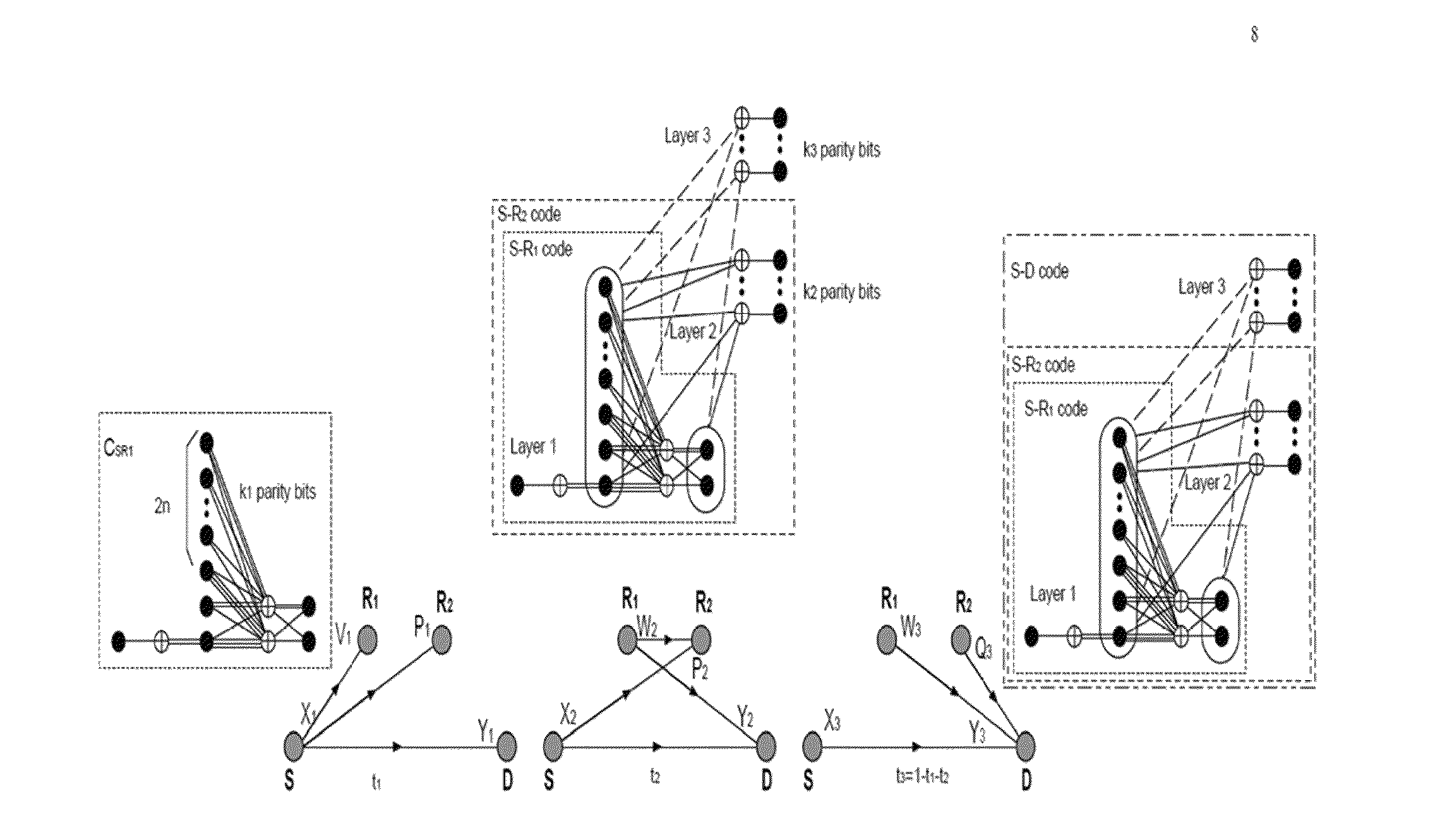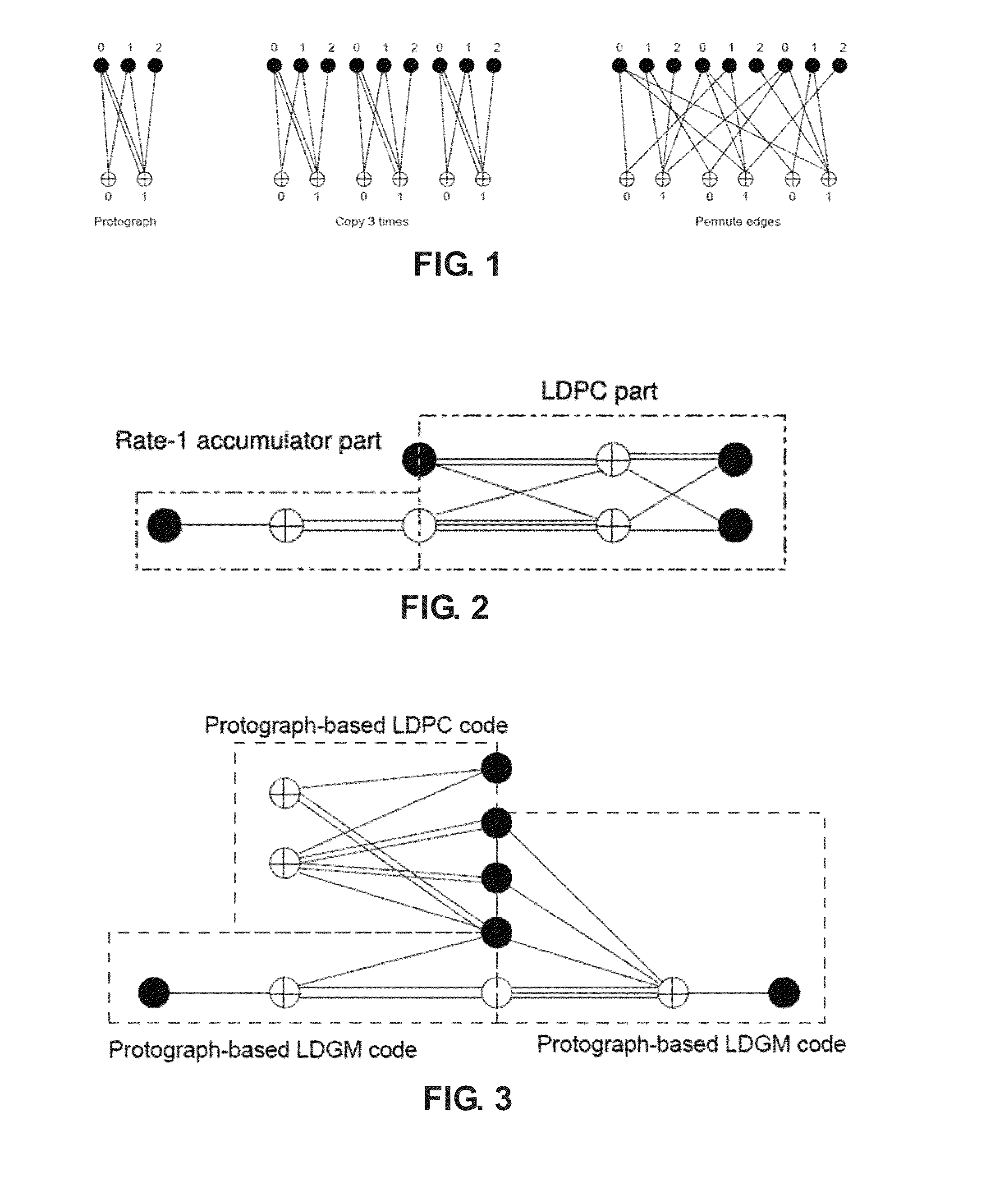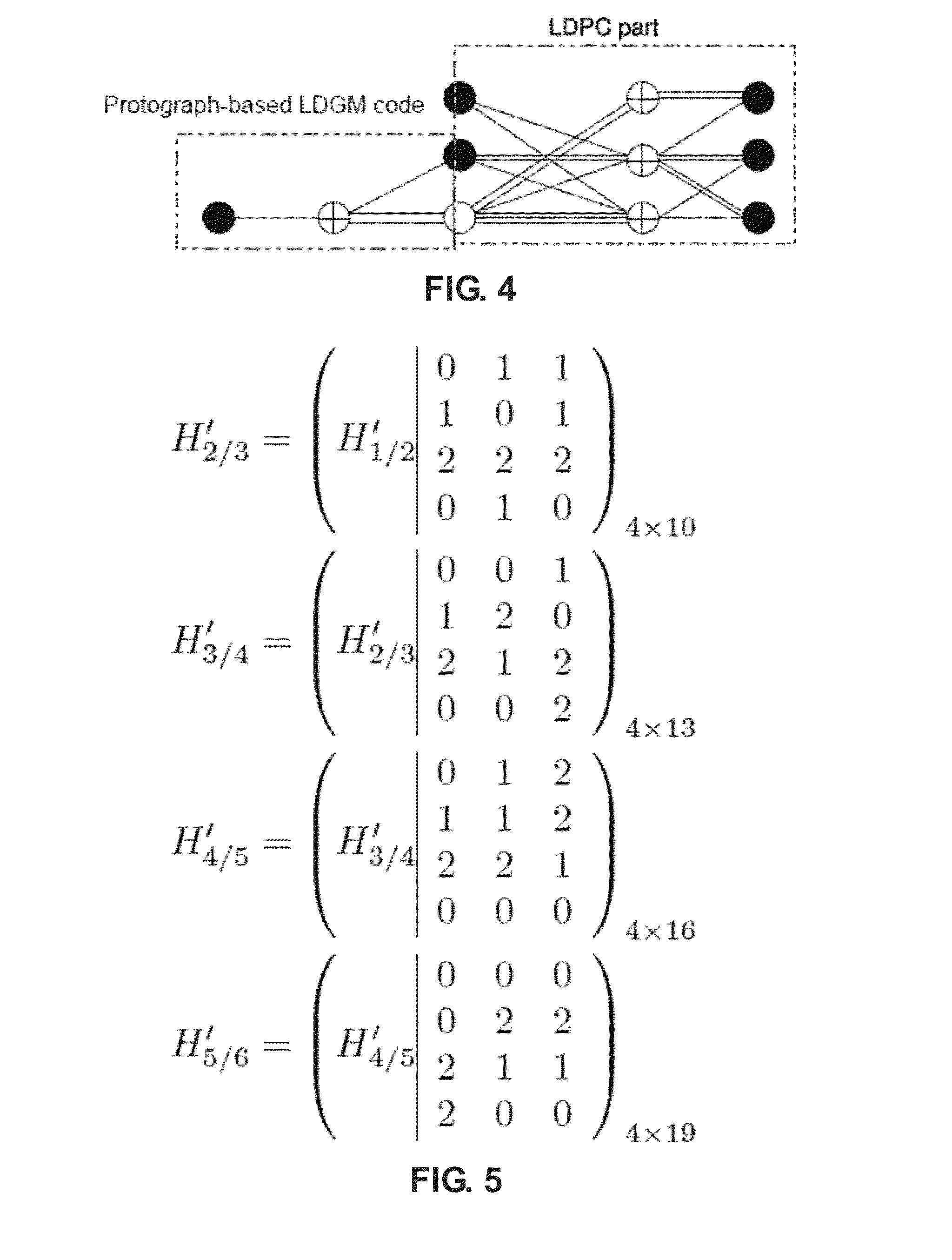Rate-compatible protograph LDPC codes
a protograph and rate-compatible technology, applied in the field of lowdensity parity check (ldpc) codes, can solve the problems of insufficient code structure, significant gap increase in puncturing, and higher decoding thresholds, and achieve the effect of higher rate row dimension and higher rate column dimension
- Summary
- Abstract
- Description
- Claims
- Application Information
AI Technical Summary
Benefits of technology
Problems solved by technology
Method used
Image
Examples
Embodiment Construction
[0037]The method of the present disclosure provides that a simple search of all possible edge connections in a protograph structure results in a protograph having smaller gap to capacity compared with those codes reported in these two patents. The resulting protograph codes can be implemented by similar encoding method in the U.S. Pat. No. 7,499,490.
[0038]The codes constructed in accordance with the methods described in the present disclosure may fall into three categories. Each can find applications in different scenarios. The three categories are: (1) LDPC codes built from individual protographs having the linear minimum distance property and low iterative decoding threshold close to the capacity limits for their respective rates; (2) Rate-compatible families of LDPC codes for adaptive coding and / or the relay channel built from a family of protographs of different rates all having the linear minimum distance property within a common encoding / decoding infrastructure; (3) Rate-compa...
PUM
 Login to View More
Login to View More Abstract
Description
Claims
Application Information
 Login to View More
Login to View More - R&D
- Intellectual Property
- Life Sciences
- Materials
- Tech Scout
- Unparalleled Data Quality
- Higher Quality Content
- 60% Fewer Hallucinations
Browse by: Latest US Patents, China's latest patents, Technical Efficacy Thesaurus, Application Domain, Technology Topic, Popular Technical Reports.
© 2025 PatSnap. All rights reserved.Legal|Privacy policy|Modern Slavery Act Transparency Statement|Sitemap|About US| Contact US: help@patsnap.com



